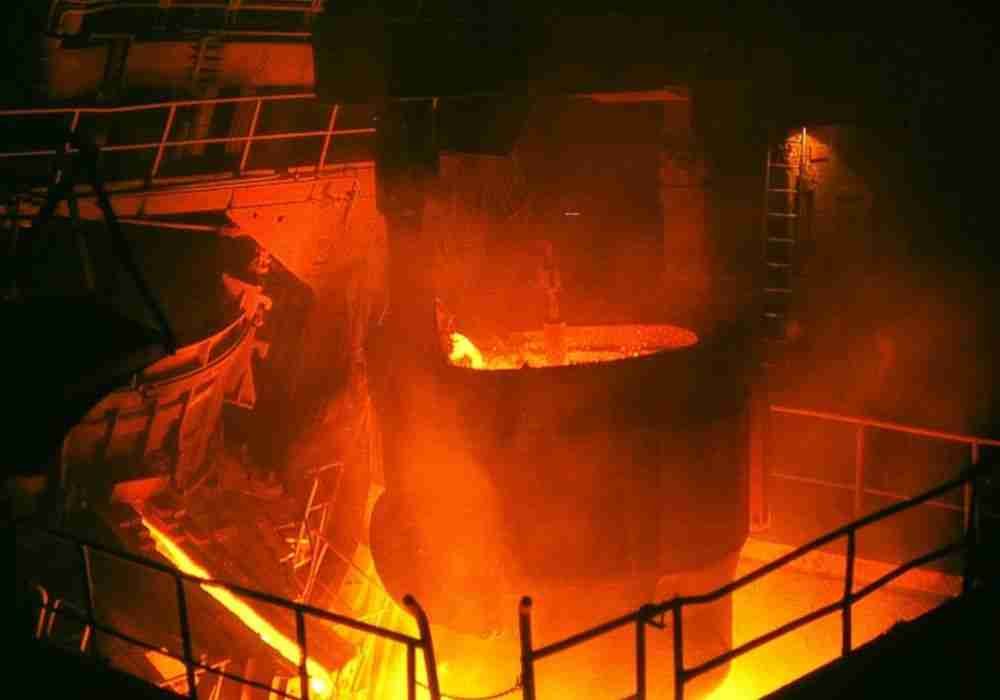Heat treatment is a very important tool which is used to modify the internal structure of steels. Heat treatment is a process of industrial, manufacturing and metalworking process used to alter the physical and chemicals properties of metal. Heat treatment process involves heating, chilling, normally to extreme temperature to achieve the desired results.
What is Heat Treatment?
Heat treatment can be defined as, “As the sequence of heating the steel to some specific temperature, holding at this temperature for some time period and cooling to its room temperature in still air” is known as Heat Treatment of Steels.
Heat treatment is a manufacturing process in which a metal or alloy is altered by heating and cooling cycle takes place in certain conditions and wide temperature ranges.
There are some purposes of heat treatment are as follows,
- To reduce the internal stress.
- To improver machinability.
- To improver ductility and malleability.
- To refine grain structure of steels.
- To refine recrystallisation.
Heat Treatment Methods:
Heat treatment methods can be classified as five techniques used for heat treatment of materials as follows,
- Annealing
- Normalizing
- Hardening
- Tempering
- Case Hardening
Annealing:
Annealing can be defined as heating the steel to some specific temperature, holding at this temperature for some time period and cooling to its room temperature is known as Annealing. In this process, the material is heated beyond upper critical temperature and then cooled at slow rate. Annealing process is usually used for steels and steel alloys.
There are some following purpose of annealing,
- To reduce the grain structure.
- To improve ductility and toughness.
- To reduce the hardness.
- To improve machinability.
- To refine the internal stresses.
There are some process of Annealing,
- Full Annealing.
- Process Annealing.
- Spherification Annealing.
- Subcritical Annealing.
Normalizing:
Normalizing can be defined as heating the steel at about 30⁰ to 50⁰ above upper critical temperature holding at this temperature about 15 minutes and cooling to its room temperature in still air, is known as Normalizing. In short, this process is similar to Annealing. In normalizing, heating the steel is cooling in a steel air not in furnaces. This process is mainly used for relieving internal stresses. Normalizing process is usually used for steels and steel alloys.
There are some following purposes of Normalizing are,
- To refine the grain structure.
- To restore toughness.
- To reduce the hardening.
- To reduce the internal stresses.
- To improve the brittleness.
- To improve the mechanical properties of the steel.
Applications of Normalizing:
- It can be used to provide moderate hardening.
- It is used for stress reliving.
- To refine the grain structure.
Hardening:
Hardening can be defined as heating the steel at above critical temperature holding at this temperature for some definite time period and cooling rapidly in air is known as hardening.
This cooling rapidly in air is known as quenching and is generally applied to stainless and high alloy steels. Hardening process is used cast iron and steel alloys such as magnesium, nickel, etc.
There are some following purposes of Hardening are,
- The main purpose of hardening is to increase the hardness strength and wear resistance.
- To obtain the micro structure.
- To improve the magnetization.
Some of the Hardening processes are,
- Carburising.
- Nitriding.
- Flame Hardening.
- Induction Hardening.
Tempering:
Tempering can be defined as heating the steel slowly at below lower critical temperature holding at this temperature and cooling slowly is known as tempering. It is mainly used to increase ductility and toughness. Tempering process is used in steels and aluminum-based alloys.
There are some following purpose of Tempering are,
- To impact toughness.
- To reduce internal stresses.
- To improve malleability.
- To improve ductility.
- To reduce hardness.
Case Hardening:
Case Hardening is the process of heat treatment in which produces a hard and wear resistant layer of a tough core of a steel is known as case hardening. This process provides improved wear resistance for parts such as gears, cam and sleeves. Case Hardening is used in steel and iron.
Case hardening is also known as surface hardening.
Applications of Heat Treatment Process:
The heat treatment process is most commonly used in metallurgy. The process is widely used in manufacturing of automobiles, aerospace, machinery and computer parts in industries. The heat treatment process is widely used in metalworking and construction.



